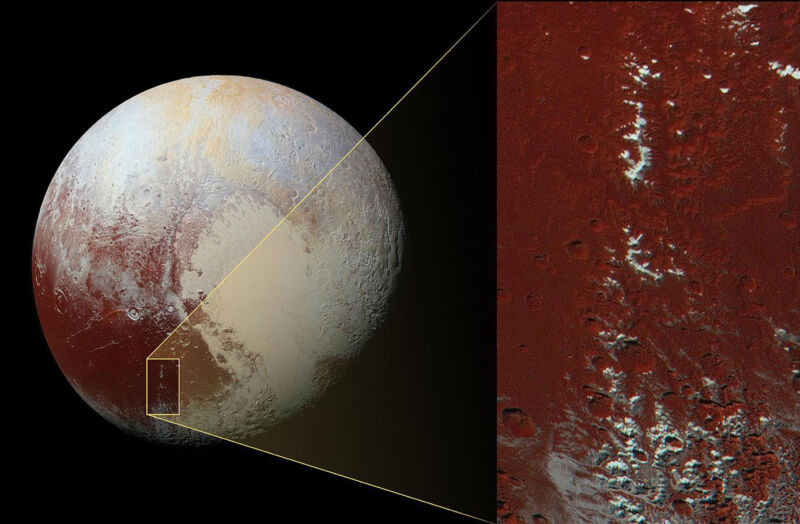Pluto’s ice-capped peaks are like Earth’s—but not

Enlarge / What dusts the peaks of Cthulhu?" is not an arcane riddle. (credit: NASA)
We can often use our knowledge of planet Earth to explain the things we see on other worlds, although we may have to tweak the physics to account for a different temperature or a tenuous atmosphere. But planetary scientists can't always assume that a familiar landscape feature formed in a familiar way.
When the New Horizons spacecraft gave us our first close-up look at Pluto, there were alien wonders aplenty. But there were also mountaintops dusted with something bright, looking very similar to Earth's snowcapped peaks. On Earth, these snow caps are produced by enhanced precipitation as air rises over the mountains and cools, combined with the colder temperatures at higher elevations.
On Pluto, that explanation can't work, for several reasons. First, temperatures generally increase as you go up a few kilometers from Pluto's surface because of gases absorbing solar energy. Winds also tend to blow downslope since the colder surface chills the air near it, making it denser. So what forms the bright dusting and how does it get there?
Read 6 remaining paragraphs | Comments